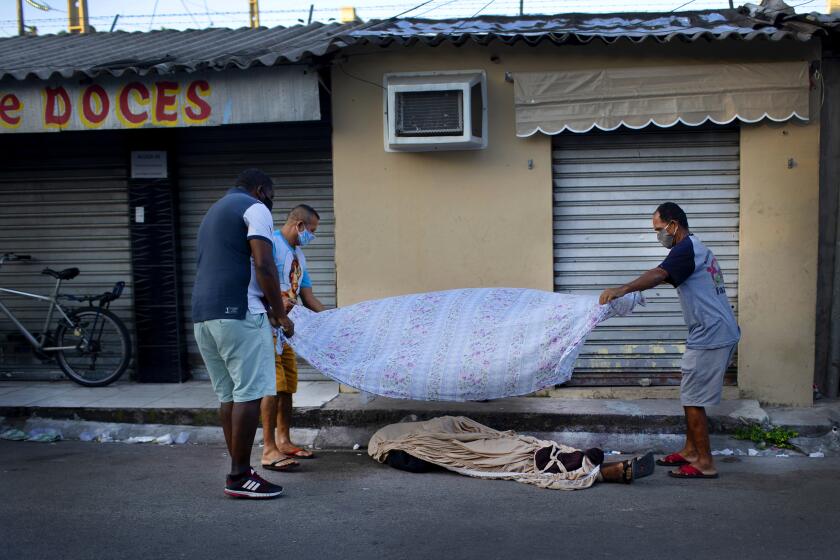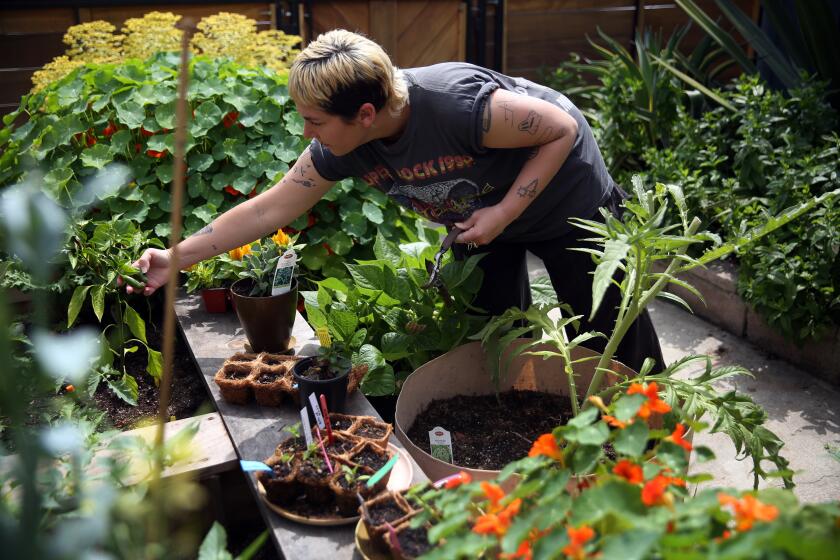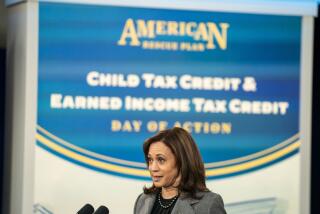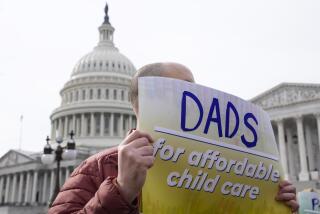Child care is still the missing ingredient for a fast economic recovery
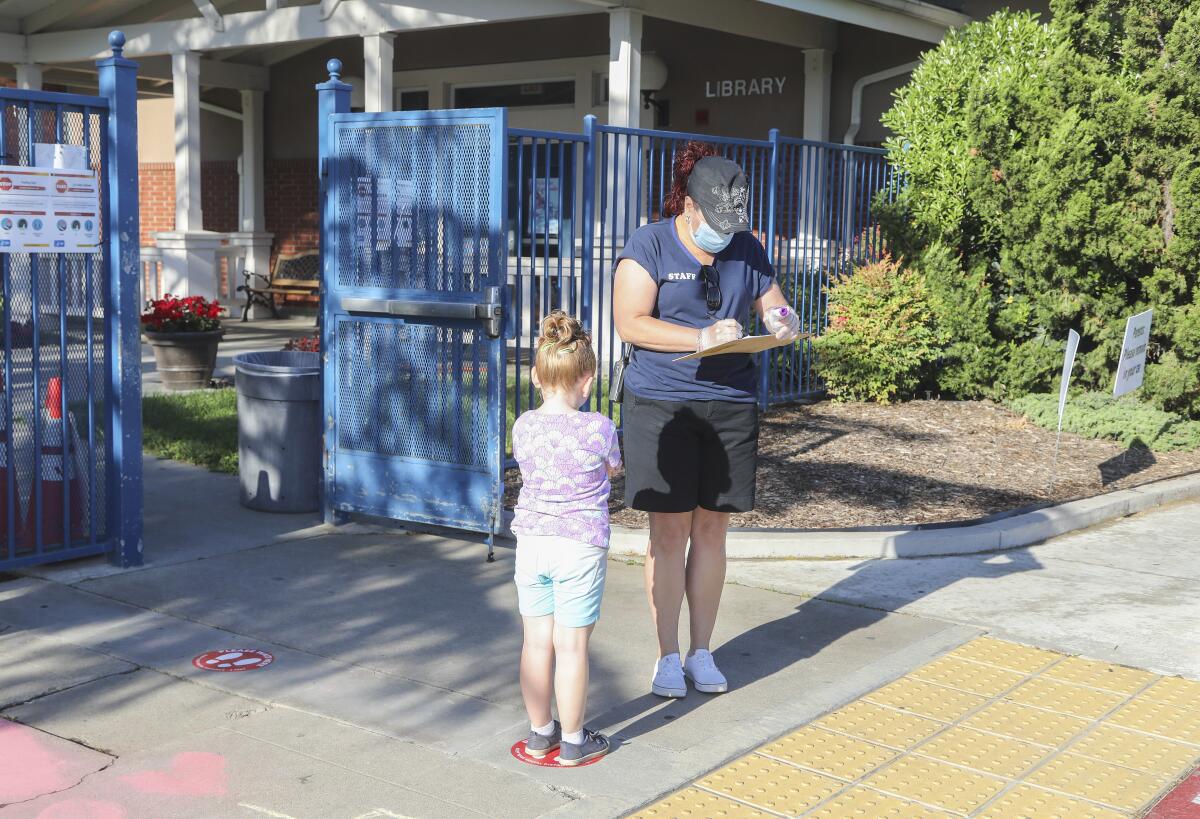
- Share via
WASHINGTON — After weeks at home, Ana Arroyo, 28, is ready to get out of the house and back to work. Her employer, Merced County Community Action Agency, has reopened and her job is just waiting for her.
But she can’t return — because there’s no one to watch her 6-year-old son, Javier.
Child-care businesses were among the hardest hit by the COVID-19-related shutdown, with a third of child-care workers nationwide laid off or furloughed. Only the hotel and restaurant industries fared worse. And because child-care providers operate on such thin margins, many have shuttered their doors forever, or will have to shortly, surveys show.
As states and businesses begin to reopen, the missing link may be a lack of child-care options for parents returning to the workplace, experts say.
“Child care could be the next big headwind to hit the U.S.,” former Obama Treasury economist Ernie Tedeschi said. “Child care is the lynchpin of so much else in the economy.”
The United Nations predicts that a global recession will reverse a three-decade trend in rising living standards and thrust half a billion people into extreme poverty.
Though the industry got $3.5 billion in the last big coronavirus relief package, that money was earmarked to ensure day-care facilities remained open to care for children of essential workers.
Members of Congress have proposed setting aside as much as another $100 billion for the industry in the next economic stimulus package. Industry advocates are asking for $50 billion, which they say would be enough to continue paying facilities to provide care for the children of essential workers, and also provide direct grants to providers to ensure they’ll be able to resume caring for children as more nonessential businesses reopen.
But with Senate Republicans signaling they won’t approve another rescue plan for five weeks at least, the shortage of child-care options for workers could prove to be a major stumbling block to hopes of a quick and smooth reopening of the U.S. economy.
Employers report in multiple federal surveys that along with fears of contracting the coronavirus, a lack of child care is one of the top reasons employees cite for not returning to work.
“I really don’t want to expose him to anything,” said Arroyo, an office assistant who lives in Winton, Calif. Her previous babysitter is no longer an option because the woman lost her home amid the pandemic. Arroyo fears large-facility child-care options aren’t safe. Now she’s waiting for a family member who has offered to step in to watch Javier.
A survey released by the National Assn. for the Education of Young Children in April estimated more than 100,000 providers have closed. And those that are open were operating at 50% capacity or less as they try to comply with social distancing and other safety guidelines. In the survey, 63% of providers said they’d be unable to survive a closure of one month or less.
In California, 34% of providers responding to the survey said they would not survive closing for more than two weeks without significant public support that would allow them to pay staff, rent and other fixed costs. Another 17% said they would not survive any closure without public support. And 21% did not know how long they would be able to close their doors and be able to reopen without support.
“This will have devastating consequences for parents who need to work and their children who will be left with no safe option as states reopen,” said Hannah Matthews, deputy executive director for policy for the Center for Law and Social Policy, an anti-poverty nonprofit.
Westchester in-home child-care provider Mary De La Rosa, 35, laid off her employees in mid-March, sending home the 14 children in their care. She applied for a Paycheck Protection Program loan from the Small Business Administration, but hasn’t been approved. Now she’s weighing whether it’s worth taking the health risks — to her own family as well as the children she cares for — to reopen.
“That’s something I ask myself every day,” De La Rosa said. “There’s just way too much uncertainty now, so we just keep postponing [a decision] to see what ends up happening.”
As the coronavirus crisis forced Los Angeles to shut down, people to lose their jobs and the economy to falter, Angelenos are rediscovering the virtues of neighborly trade, sharing produce from their gardens and bartering instead of buying.
Many providers are also waiting to see what new safety protocols they’ll have to meet.
Cheryl Lekousi, 61, of Needham, Mass., who has temporarily shut down the child-care business she operates out of her home, is using some of the $2,135 Paycheck Protection Program loan she received for cleaning and medical equipment she expects to need when she reopens — she hopes — in late June.
Among other changes, the day care area will be separated from the rest of her house with clear plastic across a doorway. She’ll take the children’s temperature and oxygen levels at the start of each day. Parents will have to drop off and pick up at the door rather than come inside. Each day after cleaning and disinfecting all toys and linens, she will wash her clothes and take a shower before crossing the threshold back into the rest of her home. Her husband is considered high risk.
“When I start working, it means there will be a number of people in my life who I will not be able to see,” including her grandchildren, she said,
An April study by the liberal think tank Center for American Progress estimated that the country could see 4.5 million fewer child-care slots available once governments and businesses reopen, a 50% drop nationwide.
That’s going to amplify existing problems with the child care system, including high costs driven by high demand and little availability, sad Nina Perez, senior campaign director of MomsRising, a grass-roots advocacy group.
“It’s such a fragile system already and now we’re seeing how it doesn’t hold up in a crisis,” Perez said. “This is going to impact employers if a core part of their workforce can’t go back to work.... There is no economic recovery without child care.”
Diana Limongi, 38, of Queens, N.Y., got the call in early May that the day care her 3-year-old Sofia attended had decided to close permanently. She hasn’t been able to stomach looking for a new day care yet, and she’s considering holding off until Sofia is old enough to enter pre-kindergarten.
“I cried, literally,” Limongi said. “It’s really hard to find a good provider.”
Congress seems to grasp that something has to be done, but disagrees on what to do.
The $3-trillion economic relief package passed by the House in May, the HEROES Act, included $7 billion for child care. But Republican Senate leaders have called that bill a Democratic wish list and say it will not be considered.
A $50-billion proposal to stabilize child-care providers and ensure child care slots will exist for parents returning to work is being debated by congressional leaders.
Senate Republican Sens. Joni Ernst of Iowa and Kelly Loeffler of Georgia have proposed $25 billion for the industry. A group of House Democrats led by Rep. Katherine Clark of Massachusetts proposed a $100-billion fund, an amount Clark said would “begin to treat child care as the key piece of our economic infrastructure that it is.”
More to Read
Get the L.A. Times Politics newsletter
Deeply reported insights into legislation, politics and policy from Sacramento, Washington and beyond. In your inbox three times per week.
You may occasionally receive promotional content from the Los Angeles Times.

